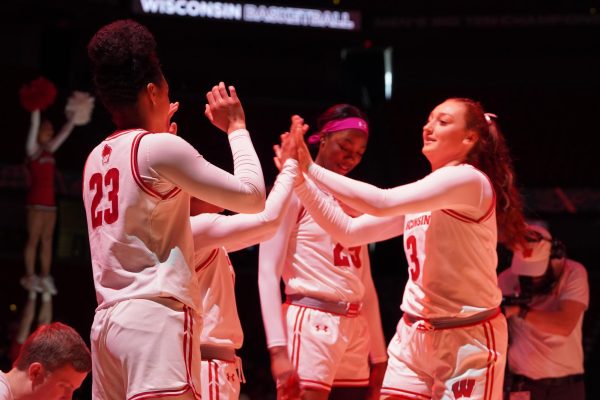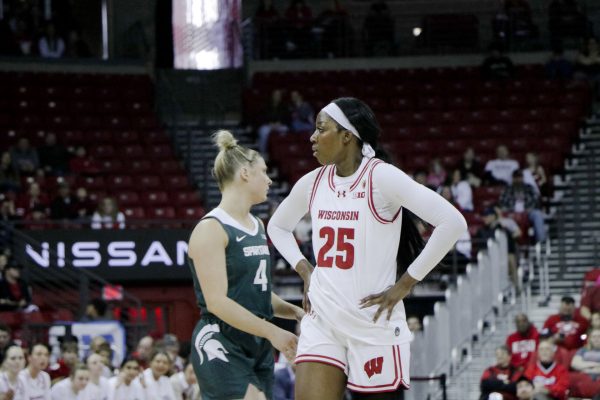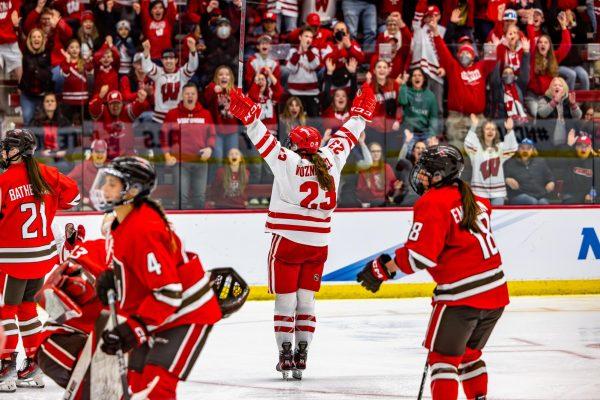Head coach Marisa Moseley and the Wisconsin women’s basketball team took an important step this season — they made the Women’s National Invitation Tournament for the first time since 2011.
An alternative to the NCAA tournament, the WNIT has long offered programs an opportunity to continue playing after the regular season should they not earn an NCAA bid. Veterans can continue to enjoy the fruits of their labor, young players can gain invaluable experience and teams often feel a boost in the following season.
Moseley and the Badgers won’t let this opportunity slip.
“For us, it was definitely like ‘if we get the chance [to play in the WNIT], we’re going to take that,’” Moseley said in a press conference in late March.
To Moseley and UW, the tournament is a step in the right direction.
After her hiring in March 2021, Moseley sought to create a new culture in Madison. She established five pillars for the program to work on — winning mindset, integrity, selflessness, communication and legacy. Making the WNIT certainly helps towards building a strong legacy with a winning mindset.
It’s not true for every team, but the WNIT has proved to be beneficial for many programs. While teams that make the WNIT don’t necessarily see large jumps in winning percentage the following season, it appears to help improve their odds in making the NCAA tournament.
Less than a quarter of teams in the NCAA make the NCAA Tournament each season. Between 1998 and 2023, a total of 8,402 squads competed for 1,608 Tournament spots, so just 22% of the entire field earned a spot. To see the impact of making the WNIT, the field needs to be narrowed down further.
A total of 6,942 teams that did not play in the WNIT in the prior season competed for 1,544 NCAA Tournament spots between 1999 and 2023. If these teams were selected to be in the tournament at random, they’d have a 19.1% chance of making it. The odds are slightly better for teams that played in the WNIT the prior season. Of the 1,224 teams that have competed in the WNIT, 23.3% of them have gone on to make the NCAA Tournament the following year.
.sno-6619e4c584e3a {
background-color: #ffffff;border: 5px solid #888888;box-shadow: -1px 0 2px 0 rgb(0 0 0 / 12%), 1px 0 2px 0 rgb(0 0 0 / 12%), 0 1px 1px 0 rgb(0 0 0 / 24%);width: calc(100% – 40px); margin: 30px auto !important; float: none;}
.sno-6619e4c584e3a h5 {
color: #000000;
}
That figure becomes even more prominent when limited to just the power conferences — the Big Ten, Big 12, SEC, ACC, Big East, Pac 12 and their earlier iterations, such as the Pac 10. The following season, 33.8% of WNIT teams from one of those conferences made the NCAA Tournament.
Many non-power schools that make the WNIT are at the top of their game or at least in better positions record-wise than teams from power conferences. There’s a few outliers, like California Baptist’s 0.963 winning percentage in 2021 and Missouri’s 0.409 in 2021, but the median winning percentage of the 893 non-power teams that have played in the WNIT since 1998 is 0.657, compared to 0.563 among 331 power teams.
Teams like UW, a power school that had a win percentage lower than 0.6, had a nice 32.3% chance of making the NCAA Tournament the following year.
It’s possible the experience coaches and players gain playing in a postseason environment like the WNIT or simply from playing more games against difficult opponents, helps develop and strengthen them for the future.
Young Badgers, like guards Ronnie Porter and Sania Copeland and forward Serah Williams, could benefit from the extra playing time. The three of them led UW in minutes played per game and now with postseason playing experience, they could be even better next season.
“To get that experience and to see what that feels like, to continue to prepare and keep playing at this time of year — I think it’s invaluable,” Moseley said.
Though the WNIT provides extra time for younger players to gain valuable experience, Moseley wants to allow her veterans to enjoy the tournament, too.
They’re a program on the rise, but Moseley addressed in the same press conference UW hasn’t reached this level for a while. It wouldn’t make sense to suddenly turn games into future showcases for inexperienced players to get reps.
“Ultimately, the goal is to compete and to put your best group out there,” Moseley said. “I also think there’s something to be said for the group that kind of [puts] you in a position to get here for them to experience that too and not to look ahead in any way.”
The Badgers earned a first-round bye before winning a tight game 67–62 over Southern Indiana. Williams, Porter and Copeland all logged at least 37 minutes in the victory, with Williams leading the scoring at 24 points.
The victory came with a massive 25–7 fourth quarter, which UW rode into its second game against Illinois State. Williams again left her mark offensively, tying Copeland for the team high in points with 18.
The Badgers nearly made it to the semifinals, but lost a close one to Saint Louis 65–60. Catastrophe struck when Williams went down with an apparent knee injury after UW’s first possession. Senior Halle Douglass stepped up and logged a season high 38 minutes, putting up seven points, seven rebounds and four assists.
It was an unfortunate end for the Badgers, but one that holds some promise. It likely won’t be long before Moseley guides them to even greater heights.


